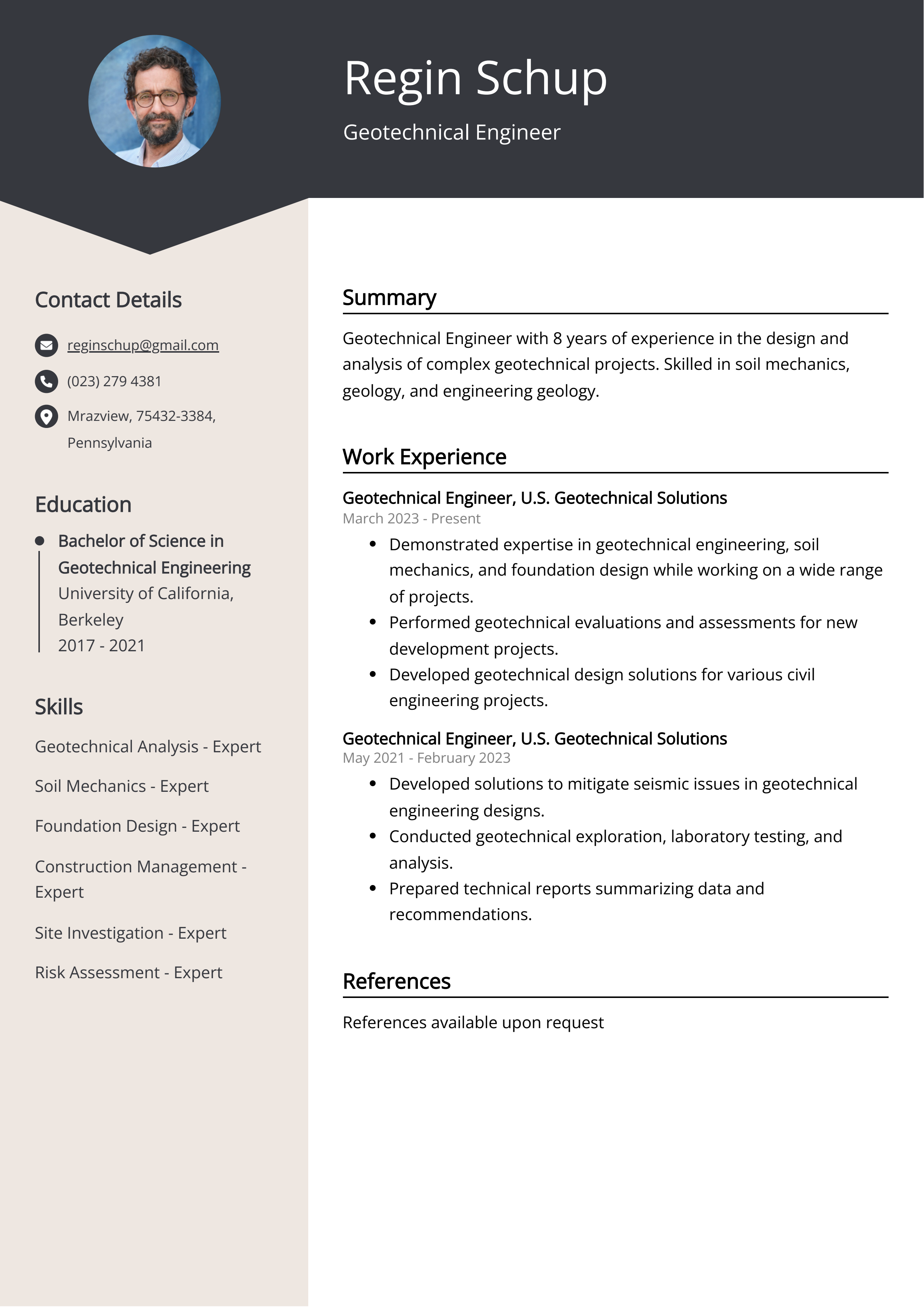The smart Trick of Geotheta That Nobody is Talking About
The smart Trick of Geotheta That Nobody is Talking About
Blog Article
All about Geotheta
Table of ContentsGetting The Geotheta To WorkSome Known Incorrect Statements About Geotheta The Best Guide To GeothetaMore About Geotheta
They work together with civil engineers, structural designers, designers, and other professionals to incorporate geotechnical factors to consider into the overall project layout and building and construction process. This requires efficient teamwork, control, and communication to ensure that the geotechnical facets line up with the project purposes and satisfy regulatory needs.Mining & Products Engineering: Concepts of boring, penetration prices, and elements affecting the selection of boring method. Features of dynamites, shooting systems and blast patterns. Blasting strategies in surface and below ground functions. Special blowing up techniques at excavation perimeters. Resonance and noise control. Mechanical and continual methods to fragmentation, consisting of longwall shearing and fullface boring.
Modelling of piece and fragment size distributions; comminution as a transfer feature. Comminution technology: squashing, grinding, dimension classification. Integrated analysis of fragmentation and comminution procedures. Offered by: Mining & Materials Design.
The 10-Second Trick For Geotheta
Bachelor's degree programs in civil, geotechnical, geological, and environmental engineering normally last 4 years and consist of basic education and learning training courses in English, social scientific research, and the liberal arts, along with courses in innovative mathematics, architectural geology, and liquid mineralogy. (https://ameblo.jp/geotheta/entry-12862281966.html)
Geotechnical engineering entails the assessment of the soil and rock conditions at a specific website, and their implications for the development of that site. As the majority of structures depend on the ground for assistance, it lacks shock that a detailed understanding of the ground conditions, and the viability of structure systems, are essential to the long-term stability and efficiency of the building or structure.
Being experts in the examination of geological developments and ground practices, geotechnical designers perform scientific investigations and testing to comprehend the effect these geological developments might carry the layout and building and construction of structure, civil and framework projects. This competence is vital for the layout and building and construction of buildings, roadways, tunnels, dams, bridges, and water and sewage systems.
The geotechnical group at Douglas Allies routinely speak with architects, design engineers, designers, and building contractors to make suggestions on layout and advancement propositions to ensure that the built structures are accordingly developed for the ground conditions. The design of footing systems needs to take into consideration the weight of the structure, the capacity of the ground to sustain that weight together with movement resistances and reliable building.
Indicators on Geotheta You Should Know
This job is considerably simplified by the use our Douglas Map geospatial platform that makes this details easily available in an easy to make use of internet browser interface. A geotechnical engineer will certainly direct the exploration of boreholes and test pits to gather dirt and various other samples, and also evaluate surface functions and ground exposures to create a geotechnical version of the subsurface problems.
Relying on the job kind and ground problems ran into, research laboratory screening may among various other points evaluate toughness, compressibility, sensitivity and/or permeability of soil and rock samples. After this data is collected and collated, the outcomes are utilized for a geotechnical design of the site, which is commonly presented as areas throughout the site.

A geotechnical examination by nature can only assess the ground problems at the areas drilled or dug deep into. All-natural variants in dirt and rock problems can occur throughout a website and in between examination places. It is as a result excellent technique that the geotechnical designer be preserved throughout building and construction of the project to provide on-site confirmation that the ground problems encountered are constant with the assumptions and recommendations offered in the geotechnical examination record.
8 Easy Facts About Geotheta Described
Geotechnical designers utilize their thorough understanding of soil and rock to analyze risk and solve troubles on varied infrastructure projectsGeotechnical design is a specialist branch of civil design which takes a look at the behaviour of planet materials and the application of dirt and rock technicians. Geo Tech Engineering. As a geotechnical engineer, you will certainly evaluate the physical, mechanical and chemical residential or basics commercial properties of dirt and rock in order to develop foundations, maintaining structures and earthworks
Geotechnical design is carefully linked to and overlaps with, both engineering geology and ground design - https://es.quora.com/profile/Ian-Hammond. It's feasible to be experts in geotechnics or help a geotechnical company yet be referred to as an engineering geologist or a ground engineer. As a geotechnical engineer, you'll need to: build and maintain relationships with clients and various other experts associated with the site, throughout each projectmaintain security criteria on website bear in mind expense ramifications when you make recommendationsstudy geological maps and airborne photos from a variety of resources and from various time periodsexamine construction plans to see just how viable they are based upon your understanding of the siteinvestigate threats or geological hazards for the sitesearch for environmentally sensitive functions, such as garbage dump start to create factual and expository ground modelsplan field investigationsdrill and evaluate examples of bedrock, dirt, groundwater and extra products monitor other professionals on sitesolve technical problems as they emerge, such as unforeseen structures at drill sitesmonitor problems during and after construction to see to it frameworks are steady in the brief and long termadding information collected on site to your preliminary researchcreating geotechnical estimations, drawings, and 2 or three-dimensional computer versions interpreting the datamaking recommendations regarding the proposed use the website

Report this page